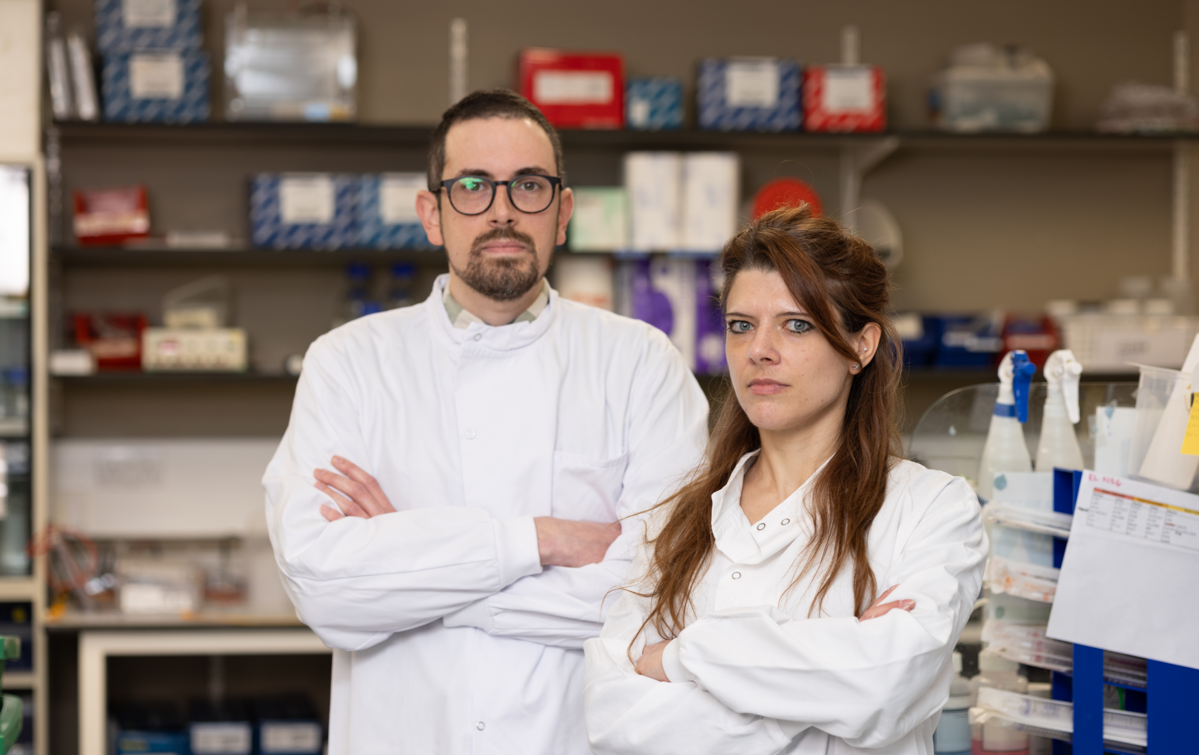
How we’re striving for better treatments
In this blog we will look at why pancreatic cancer is so difficult to treat, and highlight some of the research that we are funding to help us treat better.
To improve outcomes for people with pancreatic cancer we are investing in research that will help us to detect early, treat better, and ultimately save lives.
Thanks to our generous supporters, we’ve invested £14.4 million in research into the early detection and treatment of pancreatic cancer to date.
Pancreatic cancer is hard to treat. Currently the only way to potentially cure pancreatic cancer is through surgery. However, only around 10% of people are able to receive surgery. This is largely due to most people being diagnosed at a late stage, once the disease has already spread around their body.
Even for those who are able to have surgery, the cancer frequently recurs. So why is pancreatic cancer so hard to treat, and what are we doing about it?
Tackling the challenge of treating pancreatic cancer
A unique feature of pancreatic cancer is a tough outer fortress of scar-like tissue which surrounds the tumour. This protective layer allows the cancer cells to effectively hide from the immune system, as well as treatments such as chemotherapy and radiation which aim to destroy them. Finding ways to weaken this tough protective layer is currently an active area of research.
If we can weaken this outer layer and allow treatments to reach the tumour cells more easily, this could improve the effectiveness of existing treatments. For example, Dr Petros Mouratidis at the Institute of Cancer Research is exploring how to combine techniques such as focused ultrasound, which damages and weakens tumour cells, with immunotherapy, which boosts the power of the immune system to destroy cancer cells altogether.
Current treatments for pancreatic cancer are not very effective, and cause significant side effects. Also, relatively small amounts of the drug actually reaches the cancer cells themselves, with larger amounts damaging healthy tissue elsewhere and causing unwanted side effects. Dr George Williams at the University of Southampton is developing a new way of delivering chemotherapy directly to the tumour cells, so that more of the drug reaches cancer cells and reducing treatment side effects.
One of the reasons why survival rates for pancreatic cancer are so low is that many people with pancreatic cancer are not diagnosed until after their cancer has already spread around the body, at which point surgery is not an option. Dr Gianluca Mucciolo at the University of Cambridge is studying pancreatic cancer which has spread to the liver, to identify differences between tumour cells in the pancreas and other locations, with the aim of developing new treatments for advanced pancreatic cancer.
In order to improve the treatment of pancreatic cancer, we also need to learn from advances in other types of cancer. Research in Scotland led by Dr Kirsteen Campbell is investigating whether treatments that have been effective in blood cancers can also be used to improve the treatment of pancreatic cancer.
Bringing the research community together
To tackle the vast challenge of treating pancreatic cancer, we need to bring together the biggest research minds to work on this together. That’s why we’ve launched our Interdisciplinary Treatment Grants, which will enable researchers working in different areas of science to come together to improve current treatments or find new therapeutic targets and approaches.
"We have a duty to start developing new treatments now or else when we achieve breakthroughs in earlier detection, we still won’t be able to treat people.”
It is vitally important that alongside research into early detection, we also invest in treatment research. Early detection of pancreatic cancer will be revolutionised over the next five years with exciting initiatives such as the first breath test for pancreatic cancer gaining momentum, and the development of new treatments takes time. We need to be ready to back up the early detection revolution with new and more effective treatments, in order to achieve our ambitious goals of doubling survival for this devastating disease.